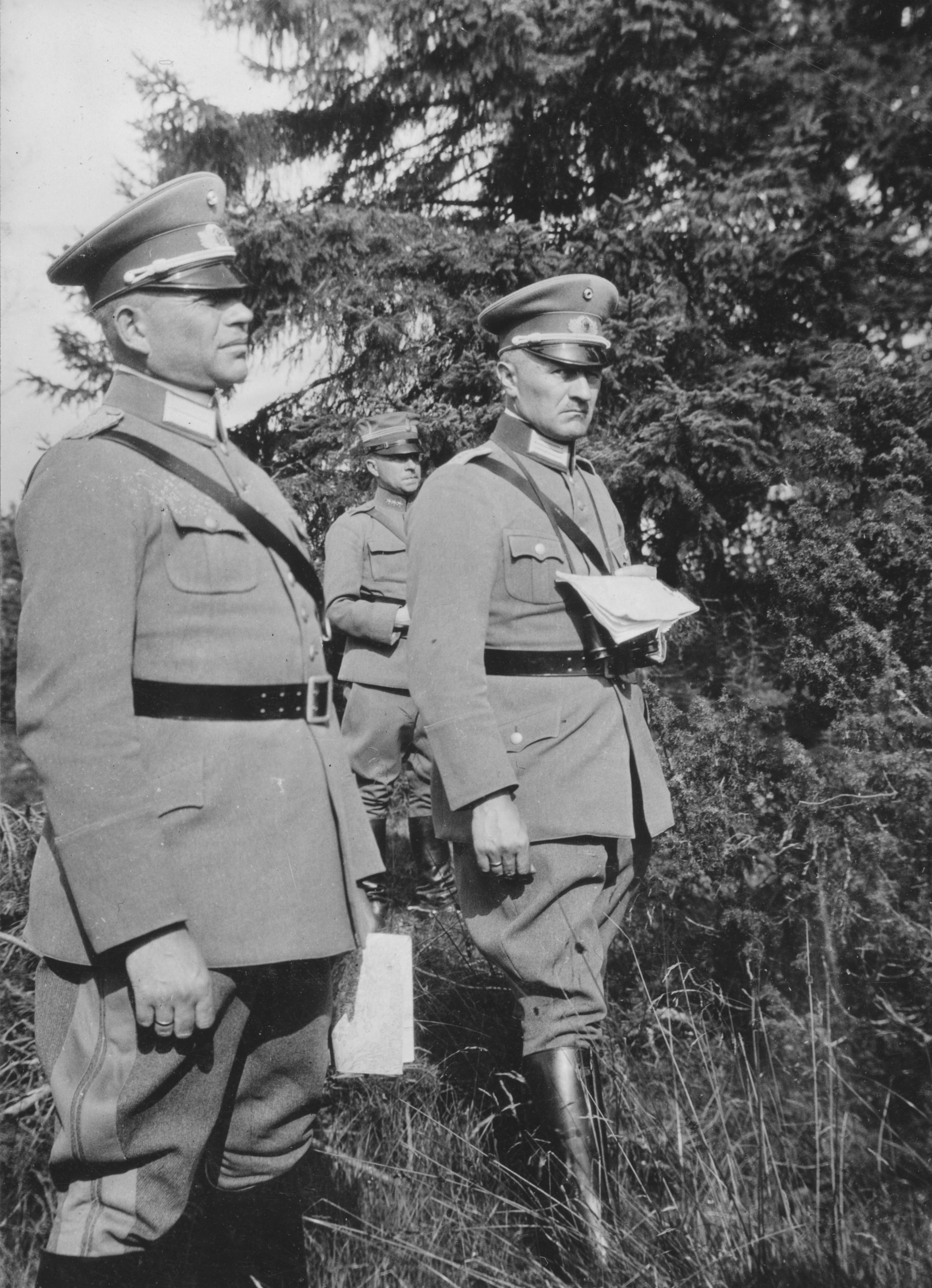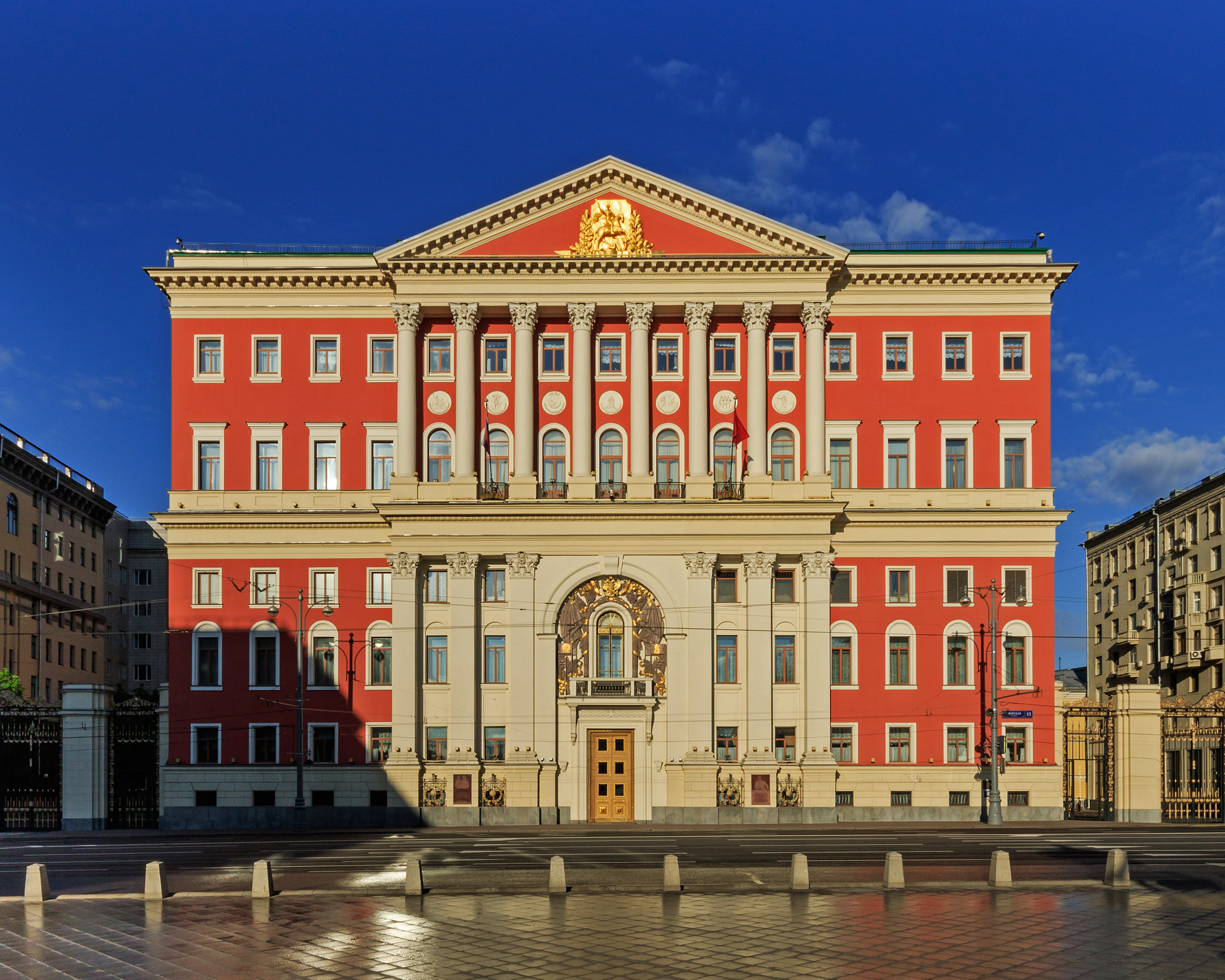|
Ilya Arkhipovich Vlasenko
Ilya Arkhipovich Vlasenko (19 July 1902 вАУ 11 May 1963) ( uk, –Ж–ї–ї—П –Р—А—Е–Є–њ–Њ–≤–Є—З –Т–ї–∞—Б–µ–љ–Ї–Њ, be, –Ж–ї—М—П –Р—А—Е—Ц–њ–∞–≤—Ц—З –£–ї–∞—Б–µ–љ–Ї–∞, russian: –Ш–ї—М—П –Р—А—Е–Є–њ–Њ–≤–Є—З –Т–ї–∞—Б–µ–љ–Ї–Њ) was a political commissar in the Red Army during and following World War II. Vlasenko was awarded the title Hero of the Soviet Union in 1943 for his leadership in the Battle of the Dnieper. Pre-war Vlasenko was born on 19 July 1902 in the town of Dobrush (now part of the Gomel Region in Belarus). His father was a worker at the city's paper mill. Vlasenko graduated from the city's two year primary school. In 1917, he began working at the paper mill. Between 1924 and 1926, Vlasenko served in the Red Army as a soldier with the 2nd Radio Regiment at Bryansk. After demobilization, Vlasenko became a trade union leader at the Dobrush paper mill. He was elected to the Central Committee of the Trade Union of Paper Industry Workers. In 1929, he became head of the trade union's ... [...More Info...] [...Related Items...] OR: [Wikipedia] [Google] [Baidu] |
Dobrush
Dobrush ( be, –Ф–Њ–±—А—Г—И, , russian: –Ф–Њ–±—А—Г—И, pl, Dobrusz) is a town within the Gomel Region of Belarus. It is located on the Iput River. Mentioned for the first time in 1335. Dobru≈° is governed by a Regional Executive Committee, the chairman of which is Volha Mokharava. History On November 21, 1941, 106 local Jews and 19 Soviet activists were murdered in a mass execution perpetrated by Einsatzkommando During World War II, the Nazi German ' were a sub-group of the ' (mobile killing squads) вАУ up to 3,000 men total вАУ usually composed of 500вАУ1,000 functionaries of the SS and Gestapo, whose mission was to exterminate Jews, Polish intellect ... 8, coming from Gomel, assisted by local policemen. During the spring of 1942, another execution took place in which about 70 Jews were also killed. Mass media The Dobrush Region newspaper is published in Dobrush. –°ulture In Dobrush there are State Institution "Dobrush Regional Palace of Culture", GDK "Meliorator", Do ... [...More Info...] [...Related Items...] OR: [Wikipedia] [Google] [Baidu] |
Order Of The Red Banner
The Order of the Red Banner (russian: –Ю—А–і–µ–љ –Ъ—А–∞—Б–љ–Њ–≥–Њ –Ч–љ–∞–Љ–µ–љ–Є, Orden Krasnogo Znameni) was the first Soviet military decoration. The Order was established on 16 September 1918, during the Russian Civil War by decree of the All-Russian Central Executive Committee. It was the highest award of Soviet Russia, subsequently the Soviet Union, until the Order of Lenin was established in 1930. Recipients were recognised for extraordinary heroism, dedication, and courage demonstrated on the battlefield. The Order was awarded to individuals as well as to military units, cities, ships, political and social organizations, and state enterprises. In later years, it was also awarded on the twentieth and again on the thirtieth anniversary of military, police, or state security service without requiring participation in combat (the "Long Service Award" variant). Award history The Russian Order of the Red Banner was established during the Russian Civil War by decree of t ... [...More Info...] [...Related Items...] OR: [Wikipedia] [Google] [Baidu] |
Heinz Guderian
Heinz Wilhelm Guderian (; 17 June 1888 вАУ 14 May 1954) was a German general during World War II who, after the war, became a successful memoirist. An early pioneer and advocate of the "blitzkrieg" approach, he played a central role in the development of the panzer division concept. In 1936, he became the Inspector of Motorized Troops. At the beginning of the Second World War, Guderian led an armoured corps in the Invasion of Poland. During the Invasion of France, he commanded the armoured units that attacked through the Ardennes forest and overwhelmed the Allied defenses at the Battle of Sedan. He led the 2nd Panzer Army during Operation Barbarossa, the invasion of the Soviet Union. The campaign ended in failure after the German offensive Operation Typhoon failed to capture Moscow, after which Guderian was dismissed. In early 1943, Adolf Hitler appointed Guderian to the newly created position of Inspector General of Armoured Troops. In this role, he had broad respons ... [...More Info...] [...Related Items...] OR: [Wikipedia] [Google] [Baidu] |
2nd Panzer Army
The 2nd Panzer Army (german: 2. Panzerarmee) was a German armoured formation during World War II, formed from the 2nd Panzer Group on October 5, 1941. Organisation Panzer Group Guderian (german: Panzergruppe Guderian) was formed on 5 June 1940 and named after its commander, general Heinz Guderian. In early June 1940, after reaching the English Channel following the breakthrough in the Ardennes, the ''Panzergruppe Guderian'' was formed from the XIX Army Corps, and thrust deep into France, cutting off the Maginot Line. In November 1940, it was upgraded into ''Panzergruppe 2''. The 2nd Panzer Group (german: Panzergruppe 2) was formed in November 1940 from Panzer Group Guderian. In October 1941 it was renamed the 2nd Panzer Army. Panzer Group 2 played a significant role in the early stages of the German invasion of the Soviet Union during Operation Barbarossa in 1941 when it was a constituent part of Army Group Centre. Operational history 2nd Panzer Group was part of the ... [...More Info...] [...Related Items...] OR: [Wikipedia] [Google] [Baidu] |
50th Army (Soviet Union)
The 50th Army was a Soviet field army during World War II. It was formed in mid-August, 1941 and deployed on the southwest approaches to Moscow. Partly encircled and destroyed by German Second Panzer Army in the opening stages of Operation Typhoon, enough of the army escaped that it could be reinforced to successfully defend the city of Tula in November. It was at this time that the 50th came under the command of Lt. Gen. Ivan Boldin, who continued in command until February, 1945. During most of its career the army was relatively small and accordingly served in secondary roles. It finished the war in East Prussia, under the command of Lt. Gen. Fyodor Ozerov, as part of 3rd Belorussian Front. Formation The Army became active on August 16, 1941, along the Desna River as part of the newly-forming Bryansk Front. The Army's first commander, Major General Mikhail Petrov, issued his Combat Order No. 1 on that date. In it, he recorded the composition of the 50th Army as follows: * 217t ... [...More Info...] [...Related Items...] OR: [Wikipedia] [Google] [Baidu] |
69th Brigade NKVD
The 69th Brigade of the NKVD troops for protection of especial importance industrial facilities (Russian: 69-—П –±—А–Є–≥–∞–і–∞ –≤–Њ–є—Б–Ї –Э–Ъ–Т–Ф CCCP –њ–Њ –Њ—Е—А–∞–љ–µ –Њ—Б–Њ–±–Њ –≤–∞–ґ–љ—Л—Е –њ—А–µ–і–њ—А–Є—П—В–Є–є –њ—А–Њ–Љ—Л—И–ї–µ–љ–љ–Њ—Б—В–Є 69-y brigada vnutrenikh voisk NKVD SSSR po okhrane osobo vaznykh predpriyatyi promyshlenosty) вАУ the subdivision of internal troops NKVD in the subordination to the Main Directorate of the NKVD for protection of especial importance industrial facilities. The Brigade was formed June 24, 1941 in accordance with the Mobilization plan in the city of Tula on the basis of the 11th Division of the NKVD troops to protect the defense plants in Tula and Tambov regions. The formation made Commander of the Brigade Colonel Safiullin G.B. and Military Commissar of the Brigade Battalion Commissar Vlasenko I.A. After a secondment Colonel Safiullin G.B. to the Acting army, 2 July Colonel Melnikov A.K. was appointed the brigade commander. Subordinate ... [...More Info...] [...Related Items...] OR: [Wikipedia] [Google] [Baidu] |
Tula Oblast
Tula Oblast (russian: –Ґ—ГћБ–ї—М—Б–Ї–∞—П –ЊћБ–±–ї–∞—Б—В—М, ''Tulskaya oblast'') is a federal subject (an oblast) of Russia. It is geographically in the European Russia region of the country and is part of the Central Federal District, covering an area of and a population of 1,553,925 (2010). Tula is the largest city and the capital of Tula Oblast. Tula Oblast borders Moscow Oblast in the north, Ryazan Oblast in the east, Lipetsk Oblast in the southeast, Oryol Oblast in the southwest, and Kaluga Oblast in the west. Tula Oblast is one of the most developed and urbanized territories in Russia, and the majority of the territory forms the Tula- Novomoskovsk Agglomeration, an urban area with a population of over 1 million. History The Tula Oblast area has been inhabited since the Stone Age, as shown by discoveries of burial mounds ( kurgans) and old settlements. By the eighth century, these lands were occupied by the Vyatichi, an East Slavic tribe who cultivated the land, tr ... [...More Info...] [...Related Items...] OR: [Wikipedia] [Google] [Baidu] |
NKVD
The People's Commissariat for Internal Affairs (russian: –Э–∞—А–ЊћБ–і–љ—Л–є –Ї–Њ–Љ–Є—Б—Б–∞—А–Є–∞ћБ—В –≤–љ—ГћБ—В—А–µ–љ–љ–Є—Е –і–µ–ї, Nar√≥dnyy komissari√°t vn√Їtrennikh del, ), abbreviated NKVD ( ), was the interior ministry of the Soviet Union. Established in 1917 as NKVD of the Russian Soviet Federative Socialist Republic, the agency was originally tasked with conducting regular police work and overseeing the country's prisons and labor camps. It was disbanded in 1930, with its functions being dispersed among other agencies, only to be reinstated as an all-union commissariat in 1934. The functions of the OGPU (the secret police organization) were transferred to the NKVD around the year 1930, giving it a monopoly over law enforcement activities that lasted until the end of World War II. During this period, the NKVD included both ordinary public order activities, and secret police activities. The NKVD is known for its role in political repression and for carrying out the Great ... [...More Info...] [...Related Items...] OR: [Wikipedia] [Google] [Baidu] |
Communist Party Of The Soviet Union
" Hymn of the Bolshevik Party" , headquarters = 4 Staraya Square, Moscow , general_secretary = Vladimir Lenin (first) Mikhail Gorbachev (last) , founded = , banned = , founder = Vladimir Lenin , newspaper = ''Pravda'' , position = Far-left , international = , religion = State Atheism , predecessor = Bolshevik faction of the RSDLP , successor = UCPвАУCPSU , youth_wing = Little Octobrists Komsomol , wing1 = Young Pioneers , wing1_title = Pioneer wing , affiliation1_title = , affiliation1 = Bloc of Communists and Non-Partisans (1936вАУ1991) , membership = 19,487,822 (early 1989 ) , ideology = , colours = Red , country = the Soviet Union The Communist Party of the Soviet Union (CPSU),; abbreviated in Russian as or also known by various other names during its history, was the founding and ruling party of the Sovie ... [...More Info...] [...Related Items...] OR: [Wikipedia] [Google] [Baidu] |
Mossoviet
The Mossoviet (Russian: –Ь–Њ—Б—Б–Њ–≤–µ—В), an abbreviation of Moscow Soviet, (–Ь–Њ—Б–Ї–Њ–≤—Б–Ї–Є–є –°–Њ–≤–µ—В) was established following the February Revolution . Initially it was a parallel, shadow city administration of Moscow, Russia run by left-wing parties. Following the October Revolution it became the city administration of Moscow throughout the Soviet period (1918вАУ1991). Initial period The first meeting of the Moscow Soviet of WorkersвАЩ Deputies occurred on 1 March, 1917. The meeting was initially attended by 52 delegates from various factories, cooperative societies and trade unions. However when the meeting was reconvened in the evening after a short adjournment, the meeting had swollen to over six hundred delegates. An executive committee of 44 members was created under the leadership of Lev Khinchuk a member of the Menshevik faction of the Russian Social Democratic Labour Party. After the Bolshevik seizure of power Between 1918 and 1941, these two administratio ... [...More Info...] [...Related Items...] OR: [Wikipedia] [Google] [Baidu] |
Chashniki
Chashniki ( be, –І–∞—И–љ—Ц–Ї—Ц, ƒМa≈°niki, russian: –І√°—И–љ–Є–Ї–Є, pl, Cza≈Ыniki, lt, ƒМa≈°nikai) is a town in Vitebsk Region, Belarus, famous for the Battle of Ula during Livonian War and Battle of Czasniki that took place during the French Invasion of Russia (1812). People * Ryhor Reles * Solomon Zeitlin * S. Ansky External links Photos on Radzima.orgJewish Cemeteries in ChashnikiThe murder of the Jews of Chashnikiduring World War II, at Yad Vashem Yad Vashem ( he, „Щ÷Є„У „Х÷Ј„©÷µ„Б„Э; literally, "a memorial and a name") is Israel's official memorial to the victims of the Holocaust. It is dedicated to preserving the memory of the Jews who were murdered; honoring Jews who fought against th ... website. Casniki Casniki Populated places in Vitebsk Region Polotsk Voivodeship Lepelsky Uyezd Holocaust locations in Belarus {{belarus-geo-stub ... [...More Info...] [...Related Items...] OR: [Wikipedia] [Google] [Baidu] |





